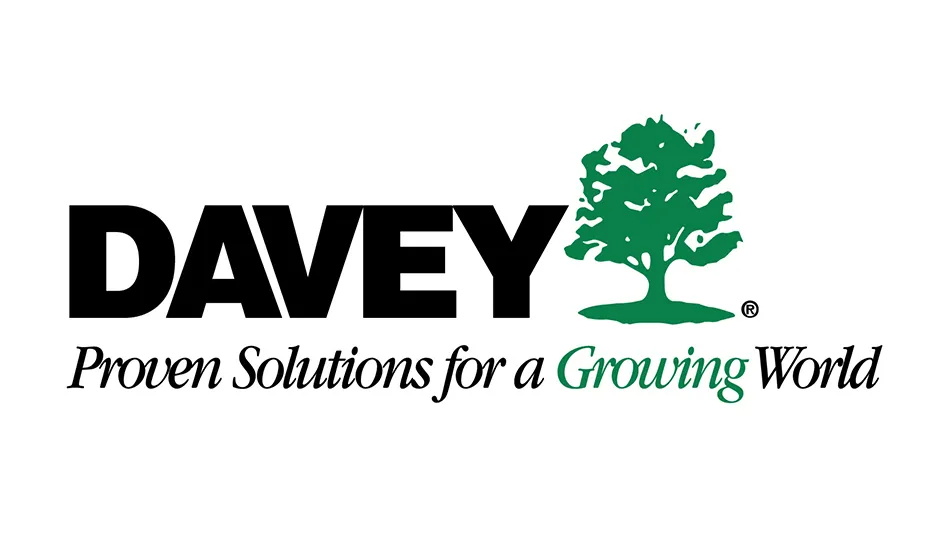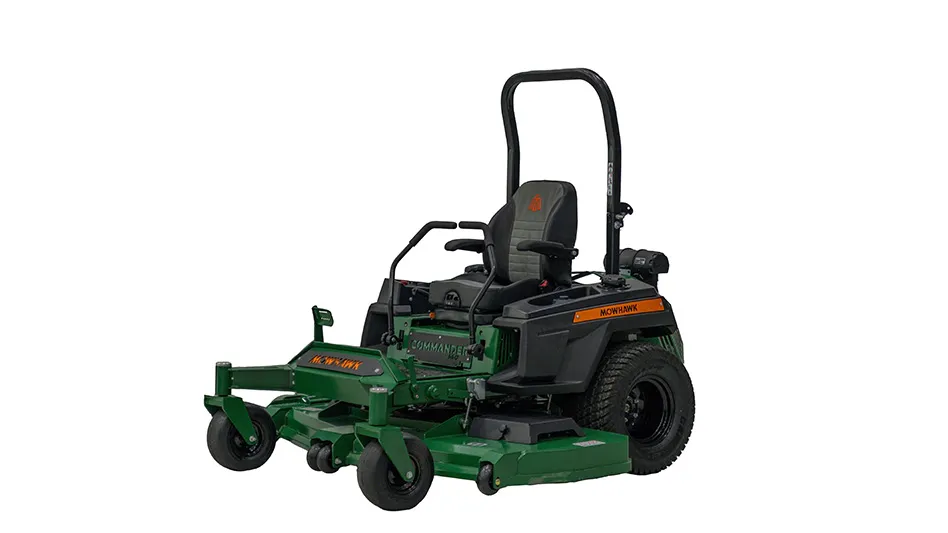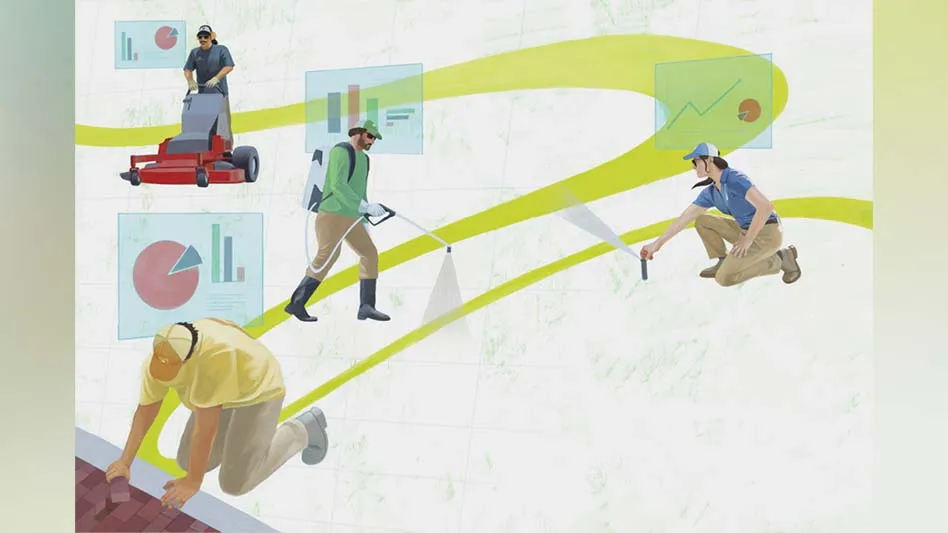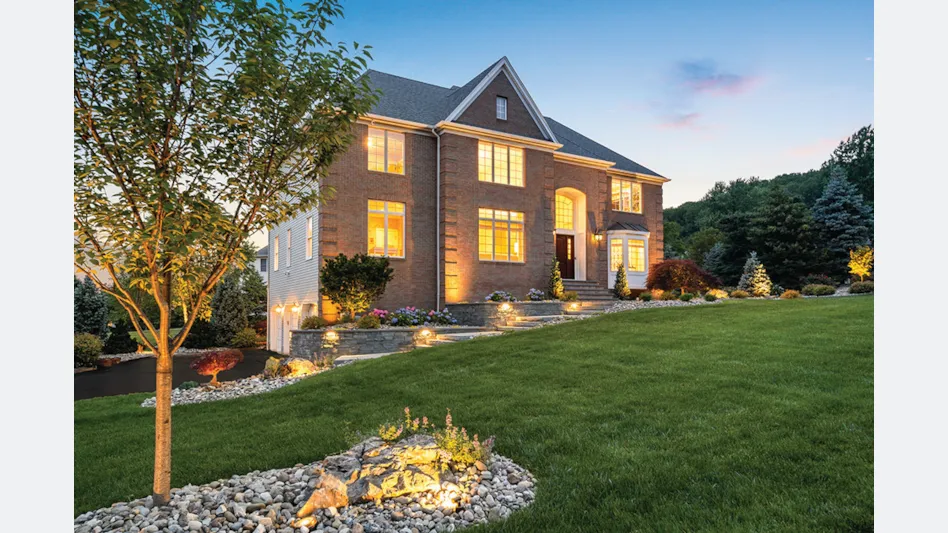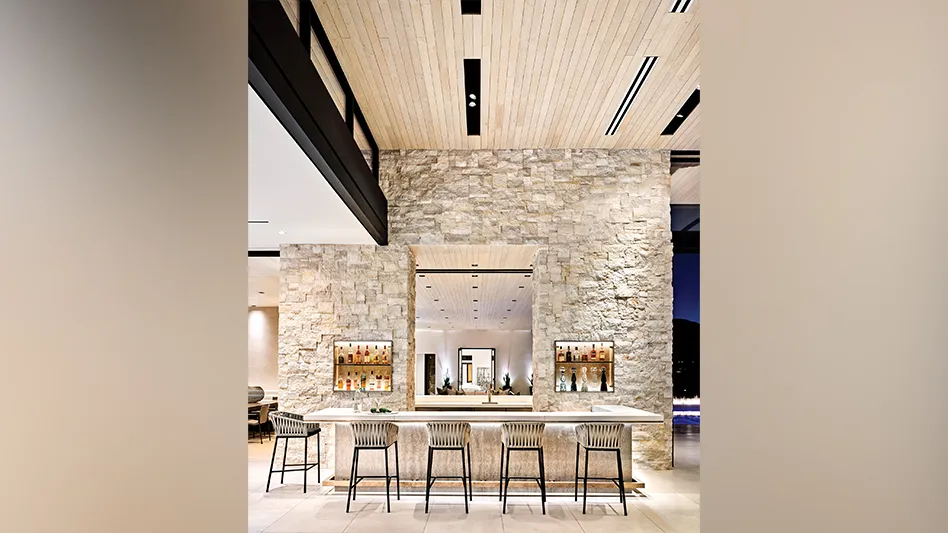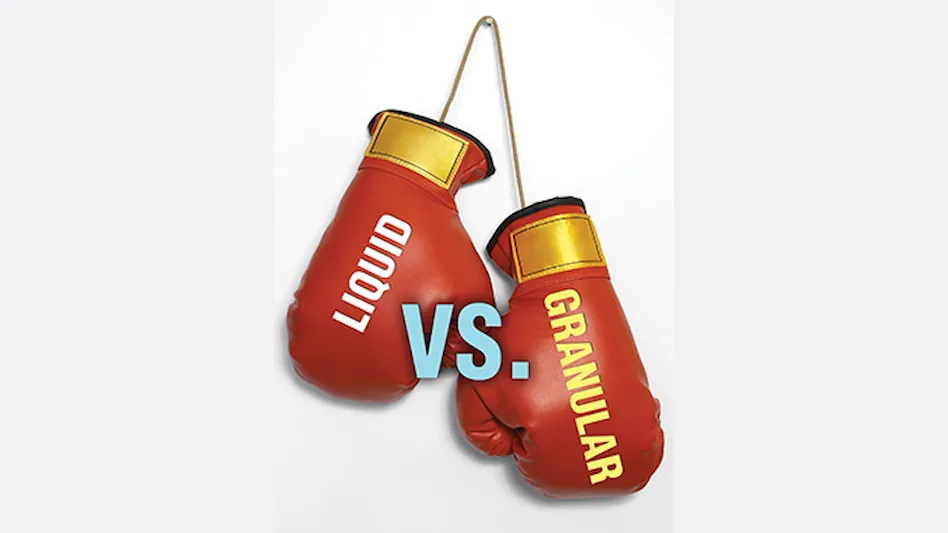
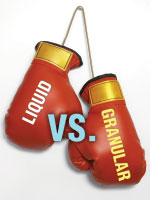 While the liquid versus granular debate may have some taking sides, what works best for one company might not be right for your company. We spoke to a few lawn care business owners and operators who weighed in on their own preferences.
While the liquid versus granular debate may have some taking sides, what works best for one company might not be right for your company. We spoke to a few lawn care business owners and operators who weighed in on their own preferences.
Ron White, owner of TurfPride in Kennesaw, Ga., says whether he uses liquid or granular is all dependent on the application and the time of year. White has a preference for liquid in the spring and fall because of coverage and efficiency. “If I’m using a pre-emergent on a granular, I could do the application but then I still come back again to do a liquid application for broadleaf control,” White says. “So I’m getting more effective coverage and being more efficient by just going with liquid in the first place.”
In the summer months, White says he uses a lot more granular product. The main reason is the broader window on turf safety. “A liquid product in the summer months is more likely to burn the turf,” he says. “But with a granular product, you’re able to reduce that risk greatly. Overall I’d say my approach is to do liquid when focusing on broadleaf control as well when doing pre-emergent application but to use granular when the focus is more on turf safety.”
In terms of overall performance, White says the two are pretty equal, but in comparing consistency from tech to tech, he finds that liquid may have a leg up. He sees a bit more consistency in lawns when the techs are using liquid. “It’s more critical to get uniform coverage with the granular application so there are more opportunities for misses with granular than with liquid,” he says.
But Greg Adams, president of One Step Tree and Lawn Care in North Chili, N.Y., says he sees techs do an overall better job with granular. Part of that reason is that liquid is a little easier to make mistakes with than granular. While he admits both can perform very well, Adams says he’s just found granular works better for his business model. “It’s a little more versatile and just fits better into our specific program,” Adams says. “I prefer the ease-of-use, the flexibility and the formulation possibilities. We used to use a lot more liquid than we do now. While it definitely depends on the situation, we typically use a lot more granular.”
Fitting the model. For many like Adams, the decision does come down to whatever fits best in the company’s business model. Jerry Grossi, owner of ArborLawn in Lansing, Mich., says he changed his business from a “liquid company” to a granular one about 10 years ago. He says that when applied properly, both products will achieve your results and do a good job since it’s the same basic chemistry behind them. But he chose to become a “granular company” because of the business model possibilities.
“We lightened up our trucks and changed the way we delivered product,” Grossi says. “To carry a lot of liquid, you need heavy duty equipment and we found a lot of benefits to making some truck and equipment changes.”
Grossi went from a tanker truck to what he says is essentially a large van. Since the big tankers were expensive and also costly to maintain, he says it’s been a nice savings. In his new arrangement, product and a ride-on spreader are carried in the back of the van.
In fact, Grossi says it’s the ride-on that has been the biggest change to the market and has made granular very efficient. “That used to be the biggest knock to granular – that it wasn’t as even as liquid,” Grossi says. “But now you can put it down very efficiently and very evenly.”
While storing granular product and loading it up may be easier for some business models, Adams points out that granular product is also more likely to be lost. Those little spills in driveways when bags are left opened, for instance, can add up to a lot of lost product over time. On commercial properties where Adams’ techs are doing smaller strips of grass – like in between driveways – he prefers to use liquid. “Granular is just a lot messier in those areas and does wind up on the driveways or walkways,” he says. “Liquid is a lot easier if we’re treating a small area.”
But in the end it really does come down to business model and application. “I definitely use a good mix of both and it’s not so cut and dry to say one is better,” White says.
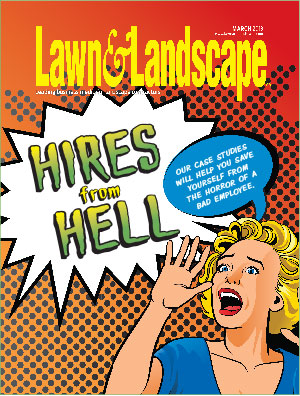
Explore the March 2013 Issue
Check out more from this issue and find you next story to read.
